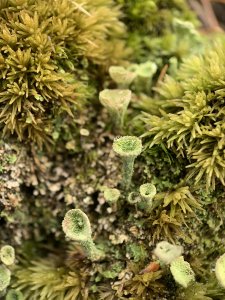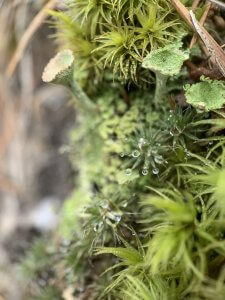Lichen at Timbers Recreation Area
March 13, 2021At the tail end of winter, as we patiently await spring’s first waves of vibrant color from spring ephemerals that carpet maple forest understories, a lesser known organism is in full focus- Lichen! Though ubiquitous and beautiful, they are often overlooked. There are 700-1000 species in the northeast United States (and 3,600 in north america with more still being identified) that grow in a wide range of habitats (but tend to prefer cooler climates).
What we see and know as lichen are actually a combination of a fungus (that gives structure) and algae (that provides photosynthesis and nutrients) in a symbiotic relationship. Although very hearty and adaptable, lichens are extremely slow-growing, suffer from habitat loss and degradation, and are sensitive to air pollution, so they are a bioindicators of air quality and their presence and abundance can reveal the general health of an area.
They take on three general forms known as crustose (flat), foliose (leafy) and fruticose (shrubby). The lichen in the photos are a kind of fruticose lichen in the genus Cladonia collectively known as “pixie cups” (they are also known by a host of other common names such as golf tee, trumpet, etc).
To learn even more check out this video from GTRLC Senior Conservation Ecologist Angie Bouma to learn all about Lichen, why they matter and what to look for on your next hike. Enjoy!
Categorised in: Field Notes, Videos

